Platax pinnatus
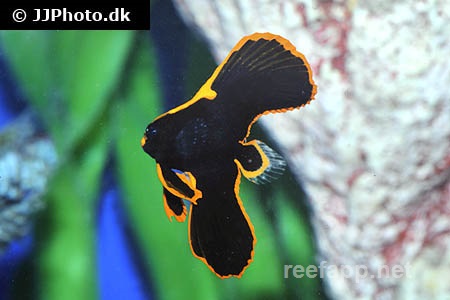
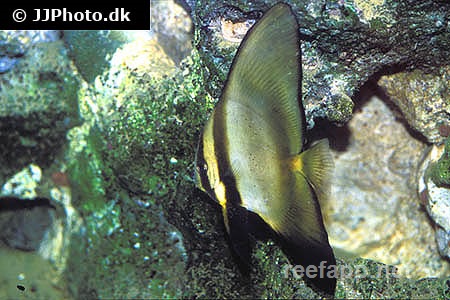
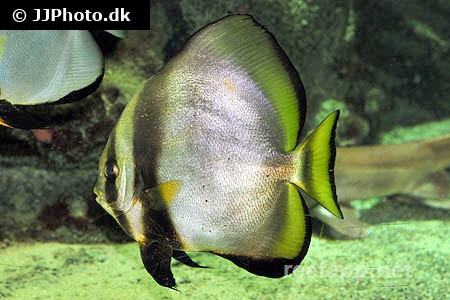
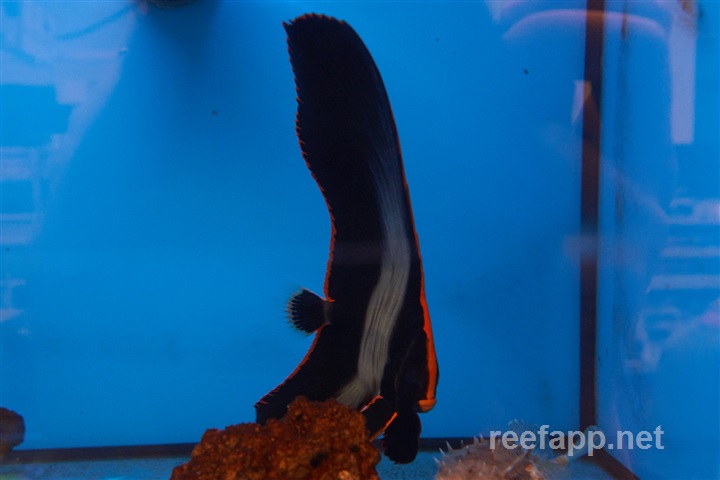
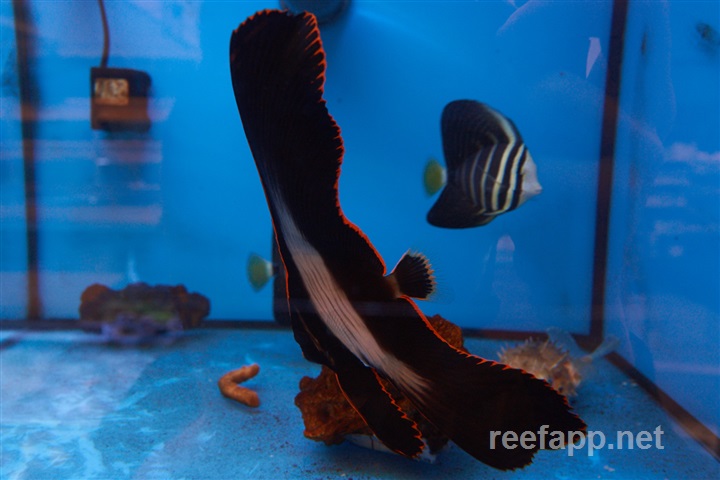
| Latin name | Platax pinnatus - (Linnaeus, 1758) |
|---|---|
| Local name | Dusky batfish |
| Family | Ephippidae - Platax |
| Origin | Australia, Japan, Indonesia, East Pacific, Central/West Pacific |
| Max length | 45 cm (17.7") |
| Minimum volume |
1200 l (317 gal) |
|---|---|
| Hardiness |
Delicate |
| Suitable for aquarium |
Experience, preparation and extra care required |
| Reef safe |
Not reef safe |
| Aggressiveness | Mostly peaceful but might be aggressive towards similar species |
| Recommended |
Larger crustaceans (Shrimp, crabs...) Macroalgea (Eg. seaweed / nori) Other invertebrates Small crustaceans (Krill, mysis, artemia...) |
|---|---|
| Maybee |
Large polyp stone coral (LPS) Small polyp stone coral (SPS) Soft coral |
This species likes eating anemones.
This species poses a threat towards shrimps and crabs etc., which are relatively small.
This species can be fastidious and in an aquarium it can be very difficult to get them to eat sufficiently.
This species demands a high water quality.
Amongst other things it means, that water must be properly oxygenated.
It is recommended that this species be kept by experienced aquarists as it requires specialized food for its continual survival.
This species often becomes malnourished in captivity, it is therefore important to enrich their food with omega-3 and vitamins.
This species is easily susceptible to Marine Ich (Cryptocaryon irritants), when stressed by other fish, bad water quality, or when relocated.
This species must be fed with an appropriately varied diet.
This species eats a great deal and demands an aquarium that can tolerate such a heavy load.
There is a greater chance of success with this species if one can supply a living feed to allow it to adapt to the tank.
This species thrives best in an aquarium with overhangs and caves.
This species revels in swimming and requires an aquarium with ample space.
This species can be bred in captivity, one can therefore consider asking your local fish store for a captive bred specimen.
This species can be very shy when first introduced into a new aquarium.
More aggressive fish can be introduced after this species has acclimatized.
When young this fish has a very impressive appearance, but develops a bland colour and loses its special shape when fully grown.
Batfishes are not well suited to coral aquaria, as they pose a threat to shrimps, anemones, corals and other invertebrates.
They grow fairly quickly, a small fish can grow to be 25 cm in height within a couple of months.
These fish will begin eating quickly, with the exception of Platax pinnatus, but will sometimes hide for a few days after being transported.
Be careful when catching the fish as their fins are easily damaged.
Batfishes should be fed with both algae based foods and different types of frozen food or seafood.
Many Spadefish cannot adjust to captivity and become much too big, but several species of the Batfish (Platax genus) can be kept in a large aquarium.
| Aquarium trade | Yes |
|---|---|
| Distribution | Western Pacific: Ryukyu Islands to Australia. Occurrence of this species in the Indian Ocean is doubtful. |
| English common names |
Shaded batfish Long-finned batfish Dusky batfish Pinnate spadefish Pinnate batfish |
| German common names |
Rotsaumfledermausfisch |
| Danish common names |
Mørk flagermusfisk |
| French common names |
Platax ombré à nageoires jaunes |
Bill Rosser. 2014. Dietary Discovery May be Key to Keeping the Pinnatus Batfish - Tropical Fish Hobbyist - (English)
Jason (r0cksteady). 2007. Pinnate Batfish (Platax Pinnatus ) Primer - Reef Central - (English)
Bob Fenner. Crazy About Batfishes, But Not Spades, Family, Ephippidae - Wet Web Media - (English)

